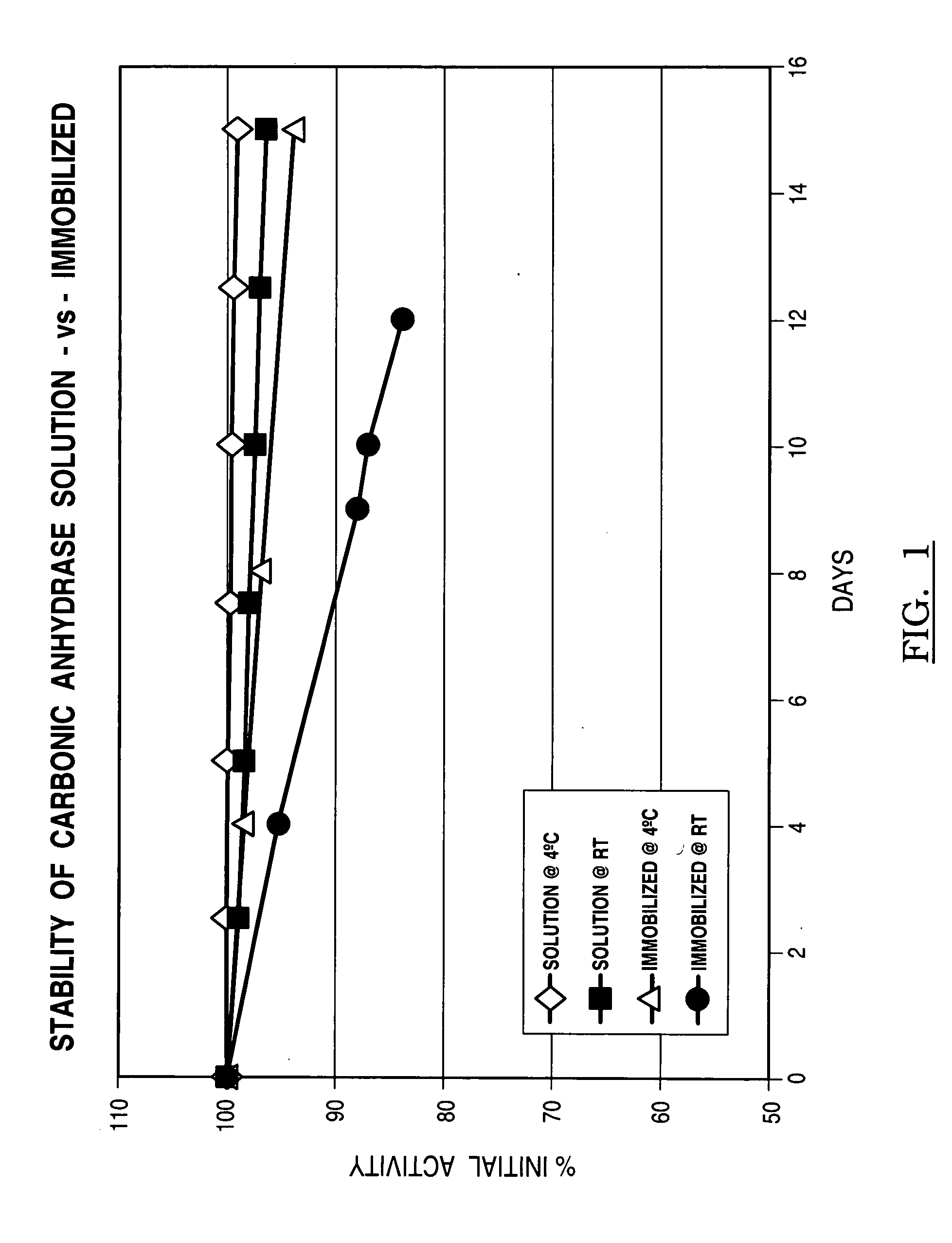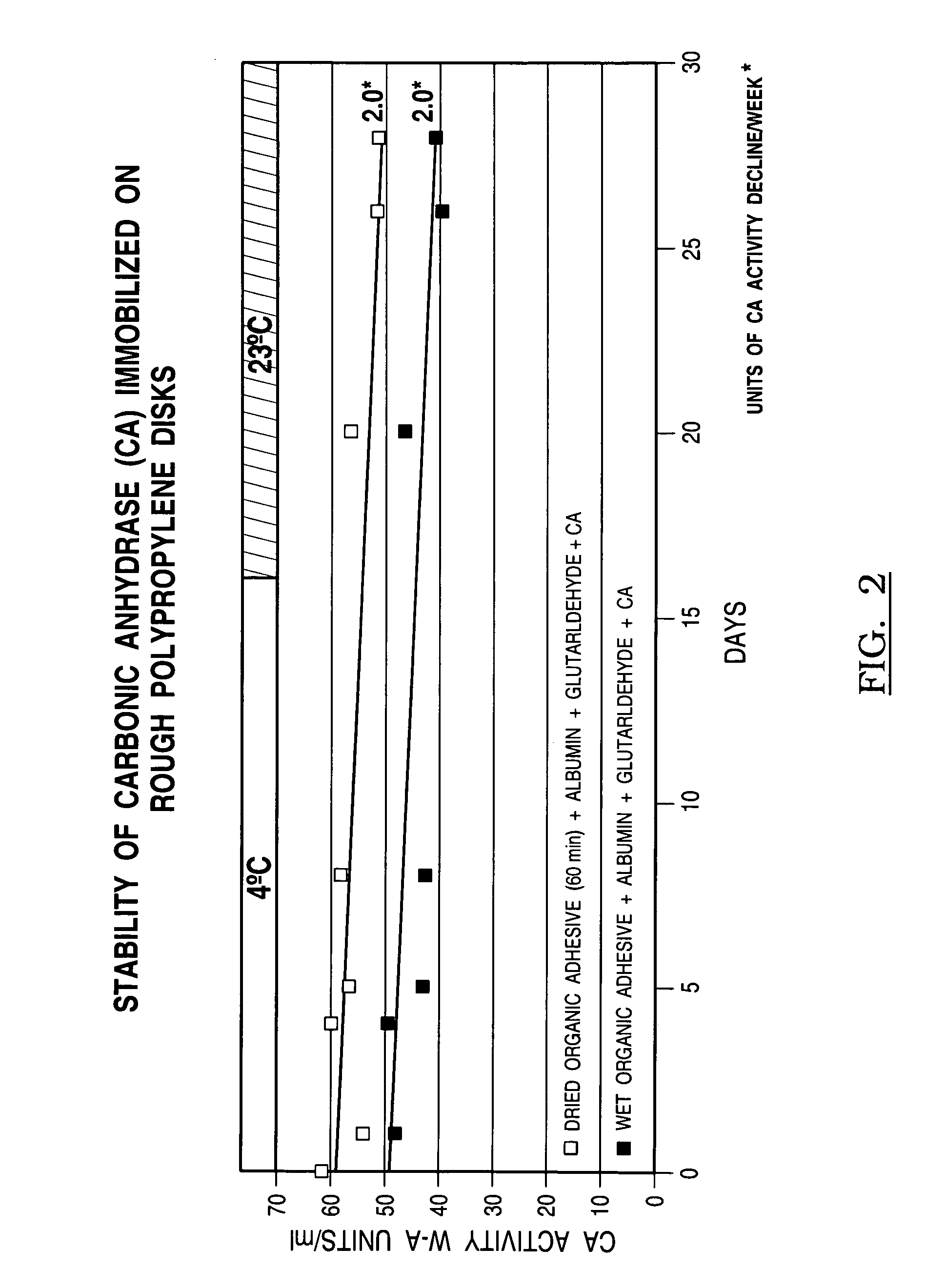Process for immobilization of protein catalysts, product, and use
a technology of protein catalyst and immobilization process, which is applied in the field of process for immobilization of protein catalyst, product and use, can solve the problems of low catalyst densities of sol-gel entrapment methods, low catalyst densities, and difficult immobilization procedures as a whole. achieve the effect of cost-effective enzyme immobilization
- Summary
- Abstract
- Description
- Claims
- Application Information
AI Technical Summary
Benefits of technology
Problems solved by technology
Method used
Image
Examples
example 1
Immobilized Carbonic Anhydrase
[0031] A polypropylene disk 0.25 inches in diameter, 0.0625 inches thick was dipped for several seconds in an adhesive solution prepared from 1 part by volume of 3M PhotoMount Spray Adhesive® diluted in 3 parts by volume toluene, then further diluted in 3 parts by volume hexane. The disk was removed from the adhesive and allowed to dry. The dried disk was then dipped in a freshly prepared mixture of about 1 part by volume ovalbumin and 10 parts by volume of 50 mM phosphate buffer, pH 7.0. The ovalbumin adhered readily to the adhesive layer. The disk was then air dried. Next, the disk was immersed for 2 hours in a solution held at 4° C. of glutaraldehyde, 1% by weight, in 50 mM phosphate buffer, pH 7.0. The disk was then washed three times with distilled water and air dried. Finally, the disk was incubated with carbonic anhydrase by immersing the disk in a 10 mg / ml solution of carbonic anhydrase in the 50 mM phosphate buffer for 2 hours at 4° C. The dis...
PUM
 Login to View More
Login to View More Abstract
Description
Claims
Application Information
 Login to View More
Login to View More - R&D
- Intellectual Property
- Life Sciences
- Materials
- Tech Scout
- Unparalleled Data Quality
- Higher Quality Content
- 60% Fewer Hallucinations
Browse by: Latest US Patents, China's latest patents, Technical Efficacy Thesaurus, Application Domain, Technology Topic, Popular Technical Reports.
© 2025 PatSnap. All rights reserved.Legal|Privacy policy|Modern Slavery Act Transparency Statement|Sitemap|About US| Contact US: help@patsnap.com



